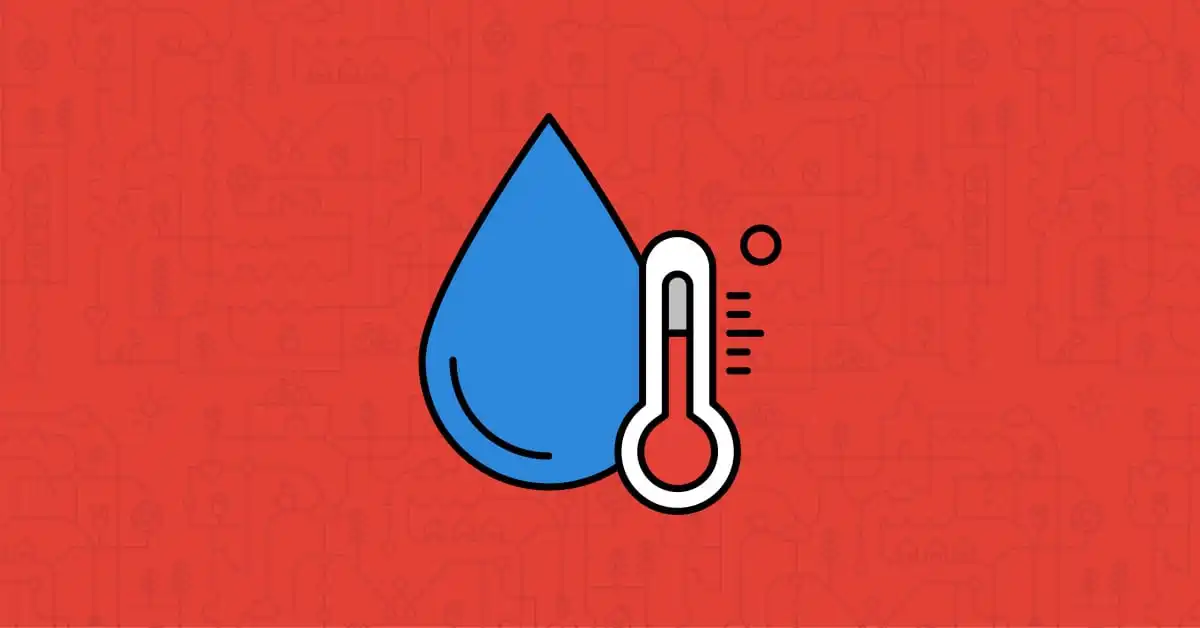Some people may give a hot shower a bad rap for drying out your skin, but many people adore its calming effects! You might be tempted to raise the temperature on your water heater if there is intense rivalry for hot water in your home between family members, or even with your washing machine or dishwasher.
The recommended temperature range for your water heater is between 130 and 140 degrees Fahrenheit. For you and your family, going higher or lower could potentially be dangerous.
Increased temperature can cause burns, but lowering the temperature below the suggested level can also be harmful. Bacteria can grow in the water heater tank when the water is cooler. This could put your family’s health at risk, putting you and your loved ones at risk of illnesses like Legionnaires’ disease.
Best Temperature for Water heater
Call a plumber if you think your water heater’s temperature setting is off, either too high or too low. The plumber will be able to quickly check the setting with a special thermometer and make any required adjustments.
A professional will also be able to check for sediment accumulation and calcification in the hot water tank itself if the temperature on the water tank has been adjusted but you do not seem to be seeing any difference in water temperature. Hearing hissing or sizzling sounds is another sign that sediment may have accumulated in the tank. A specialist can drain the tank and then try to solve the issue by soaking the components and scraping off any scale that may have accumulated over time.
It’s crucial to remember that the temperature setting is unaffected by the type of pipe, how the water is heated (gas or electric), and whether your system is a tank- or tankless. However, there are several things you should take into account while choosing your temperature, including:
If your home has elderly or young children who could get third-degree burns in a matter of seconds, or if it’s just you and your cat because there won’t be as much need for hot water, stick with 120°F.
In homes with an immunocompromised individual, a dishwasher that doesn’t pre-heat, or more occupants due to a larger need for hot water, 140°F should be taken into consideration.
Few Questions May Arise
Do You Live With Any At-Risk Individuals?
The effects of hot water might be particularly harsh for persons who are especially sensitive to high temperatures. For small infants, third-degree burns can occur after just two seconds of exposure to water that is 150 degrees Fahrenheit and after just five seconds at 140 degrees. Lowering the temperature makes your baby much safer and is better for your energy costs as well. We advise keeping your water heater set no higher than 130 degrees if you have a baby or any children under the age of three.
Elderly households should adhere to the same advice and regulations as everyone else since they are also susceptible to painful injuries from unintentional exposure to hot water. However, persons with compromised immune systems or respiratory conditions might prefer hotter water temperatures to kill off bacteria and produce more steam in the air while bathing. We advise keeping the water temperature for these populations below 140 degrees, providing there are no younger children around.
But What About The Price Of Energy?
An average home uses between 14 and 18 percent of its energy on the water heater. Furthermore, it could be tempting to lower the temperature to save money. Be aware that a 10°F drop in temperature corresponds to an energy savings of between 3 and 5 percent. Legionella, however, can endure temperatures as high as 122°F. So, strike a balance between your risk tolerance and your energy consumption targets!
Play with it if you’re still unsure. A temperature dial is found on a lot of water heaters. If yours doesn’t, run the water for a few minutes and use a thermometer to measure the temperature. Start at 120°F and gradually increase the temperature until you are satisfied.
Have You Got an Energy-Saving Appliance?
Dishwashers are increasingly being preheated. Without forcing you to raise the temperature coming from your water heater, these systems take in water and then raise the temperature to even higher levels for an even better and more hygienic clean. The next time you require an update or replacement, we strongly advise searching for a dishwasher with a pre-heat system. If it won’t be for a while, you could choose to raise the water heater’s temperature to 140 degrees. As long as you use enough cold water to make up the difference, this will maintain the water nice and hot for your dishwasher while still being safe to use for the majority of your family.
Conclusion
A water tank booster might be the answer for houses that must balance the need to keep hot water at a greater temperature for health safety with reducing the risk of scorching. It mixes with cold water to offer a lower temperature at the tap while keeping your tank at 140°F to keep pathogens at bay. Or, you can live in a house where hot water takes a while to reach the faucet no matter what temperature you select (or a certain tap farthest from the water heater). To avoid waiting, get it sorted today through Wolcott.
As hot water is steadily circulated through the pipes via a hot water circulating system. Whatever you prefer, give us a call and we’ll figure out your hot water issues! Call us at 503-563-2937.



